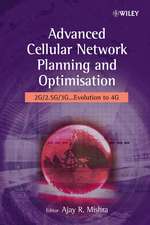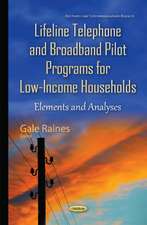Advanced Practical Process Control
Autor Brian Roffel, Ben Betlemen Limba Engleză Hardback – 19 sep 2003
| Toate formatele și edițiile | Preț | Express |
|---|---|---|
| Paperback (1) | 389.88 lei 43-57 zile | +58.25 lei 6-12 zile |
| Springer Berlin, Heidelberg – 20 noi 2013 | 389.88 lei 43-57 zile | +58.25 lei 6-12 zile |
| Hardback (1) | 897.81 lei 43-57 zile | |
| Springer Berlin, Heidelberg – 19 sep 2003 | 897.81 lei 43-57 zile |
Preț: 897.81 lei
Preț vechi: 1094.89 lei
-18% Nou
Puncte Express: 1347
Preț estimativ în valută:
171.82€ • 178.72$ • 141.85£
171.82€ • 178.72$ • 141.85£
Carte tipărită la comandă
Livrare economică 14-28 aprilie
Preluare comenzi: 021 569.72.76
Specificații
ISBN-13: 9783540404804
ISBN-10: 3540404805
Pagini: 330
Ilustrații: IX, 309 p. With online files/update.
Dimensiuni: 155 x 235 x 25 mm
Greutate: 0.64 kg
Ediția:2004
Editura: Springer Berlin, Heidelberg
Colecția Springer
Locul publicării:Berlin, Heidelberg, Germany
ISBN-10: 3540404805
Pagini: 330
Ilustrații: IX, 309 p. With online files/update.
Dimensiuni: 155 x 235 x 25 mm
Greutate: 0.64 kg
Ediția:2004
Editura: Springer Berlin, Heidelberg
Colecția Springer
Locul publicării:Berlin, Heidelberg, Germany
Public țintă
GraduateCuprins
1 Introduction to Advanced Process Control Concepts.- 1.1 Process Time Constant.- 1.2 Domain Transformations.- 1.3 Laplace Transformation.- 1.4 Discrete Approximations.- 1.5 z-Transforms.- 1.6 Advanced and Modified z-Transforms.- 1.7 Common Elements in Control.- 1.8 The Smith Predictor.- 1.9 Feed-forward Control.- 1.10 Feed-forward Control in a Smith Predictor.- 1.11 Dahlin’s Control Algorithm.- References.- 2 Process Simulation.- 2.1 Simulation using Matlab Simulink.- 2.2 Simulation of Feed-forward Control.- 2.3 Control Simulation of a 2x2 System.- 2.4 Simulation of Dahlin’s Control Algorithm.- 3 Process Modeling and Identification.- 3.1 Model Applications.- 3.2 Types of Models.- 3.3 Empirical (linear) Dynamic Models.- 3.4 Model Structure Considerations.- 3.5 Model Identification.- References.- 4 Identification Examples.- 4.1 SISO Furnace Parametric Model Identification.- 4.2 MISO Parametric Model Identification.- 4.3 MISO Non-parametric Identification of a Non-integrating Process.- 4.4 MIMO Identification of an Integrating and Non-integrating Process.- 4.5 Design of Plant Experiments.- 4.5.1 Nature of Input Sequence.- 4.5.2 PRBS Type Input.- 4.5.3 Step Type Input.- 4.5.4 Type of Experiment.- 4.6 Data File Layout.- 4.7 Conversion of Model Structures.- 4.8 Example and Comparison of Open and Closed Loop Identification.- References.- 5 Linear Multivariable Control.- 5.1 Interaction in Multivariable Systems.- 5.2 Dynamic Matrix Control.- 5.3 Properties of Commercial MPC Packages.- References.- 6 Multivariable Optimal Constraint Control Algorithm.- 6.1 General Overview.- 6.2 Model Formulation for Systems with Dead Time.- 6.3 Model Formulation for Multivariable Processes.- 6.4 Model Formulation for Multivariable Processes with Time Delays.- 6.5 Model Formulation in Caseof a Limited Control Horizon.- 6.6 Mocca Control Formulation.- 6.7 Non-linear Transformations.- 6.8 Practical Implementation Guidelines.- 6.9 Case Study.- 6.10 Control of a Fluidized Catalytic Cracker.- 6.11 Examples of Case Studies in MATLAB.- 6.12 Control of Integrating Processes.- 6.13 Lab Exercises.- 6.14 Use of MCPC for Constrained Multivariable Control.- References.- 7 Internal Model Control.- 7.1 Introduction.- 7.2 Factorization of Multiple Delays.- 7.3 Filter Design.- 7.4 Feed-forward IMC.- 7.5 Example of Controller Design.- 7.6 LQ Optimal Inverse Design.- References.- 8 Nonlinear Multivariable Control.- 8.1 Non-linear Model Predictive Control.- 8.2 Non-linear Quadratic DMC.- 8.3 Generic Model Control.- 8.4 Problem Description.- 8.5 GMC Application to the CSTR System.- 8.6 Discussion of the GMC Algorithm.- 8.7 Simulation of Reactor Control.- 8.8 One Step Reference Trajectory Control.- 8.9 Predictive Horizon Reference Trajectory Control.- References.- 9 Optimization of Process Operation.- 9.1 Introduction to Real-time Optimization.- 9.2 Model Building.- 9.3 The Objective Function.- 9.4 Unconstrained Functions: one Dimensional Problems.- 9.5 Unconstrained Multivariable Optimization.- 9.6 Linear Programming.- 9.7 Non-linear Programming.- References.- 10 Optimization Examples.- 10.1 AMPL: a Multi-purpose Optimizer.- 10.2 Optimization Examples.- References.- 11 Integration of Control and Optimization.- 11.1 Introduction.- 11.2 Description of the Desalination Plant.- 11.3 Production Maximization of Desalination Plant.- 11.4 Linear Model Predictive Control of Desalination Plant.- 11.5 Reactor problem definition.- 11.6 Multivariable Non-linear Control of the Reactor.- References.- Appendix I. MCPC software guide.- I.1 Installation.- I.2 Model identification.- I.2.1 General process information.- I.2.2 Identification data.- I.2.3 Output details.- I.3 Controller design.- I.4 Control simulation.- I.5 Dealing with constraints.- I.6 Saving a project.- Appendix II. Comparison of control strategies for a hollow shaft reactor.- II.1 Introduction.- II.2 Model Equations.- II.3 Proportional Integral Control.- II.4 Linear Multivariable Control.- II.5 Non-linear Multivariable Control.- References.
Recenzii
From the reviews:
"The book Advanced Practical Process Control by Roffel and Betlem complements the textbook literature in the field of process control with a solution oriented approach. … The approach is very practical and solution oriented. It aims at familiarizing the reader with essential concepts of advanced process control as they are employed nowadays in the process industries. … the book definitely does enrich the textbook literature on process control. … The target audience is indeed the industrial practitioner or the chemical engineering student … ." (W. Marquardt, International Journal of Robust and Nonlinear Control, Vol. 16 (2), 2006)
"This book is to help the process engineer to start from the available theory and to build control solutions. … Having some theoretical background in process dynamics, identification and optimal control, this book … will help the process engineer to solve control problems for process improvement tasks in practice." (Kurt Marti, Zentralblatt MATH, Vol. 1042 (17), 2004)
“The book Advanced Practical Process Control … has been written for senior and graduate students as a comprehensive textbook on advanced process control with a solution-oriented approach. … The book covers a large array of process-control solutions. … The book is extremely well organized. Each chapter … gives a clear summary of what is to be described. … illustrated by numerous pictures, plots, and flow diagrams. … The presentations are clear, and the concepts and ideas are illustrated extremely well through numerous, interesting examples.” (Luige Vladareanu, International Journal of Acoustics and Vibration, Vol. 14 (3), 2009)
"The book Advanced Practical Process Control by Roffel and Betlem complements the textbook literature in the field of process control with a solution oriented approach. … The approach is very practical and solution oriented. It aims at familiarizing the reader with essential concepts of advanced process control as they are employed nowadays in the process industries. … the book definitely does enrich the textbook literature on process control. … The target audience is indeed the industrial practitioner or the chemical engineering student … ." (W. Marquardt, International Journal of Robust and Nonlinear Control, Vol. 16 (2), 2006)
"This book is to help the process engineer to start from the available theory and to build control solutions. … Having some theoretical background in process dynamics, identification and optimal control, this book … will help the process engineer to solve control problems for process improvement tasks in practice." (Kurt Marti, Zentralblatt MATH, Vol. 1042 (17), 2004)
“The book Advanced Practical Process Control … has been written for senior and graduate students as a comprehensive textbook on advanced process control with a solution-oriented approach. … The book covers a large array of process-control solutions. … The book is extremely well organized. Each chapter … gives a clear summary of what is to be described. … illustrated by numerous pictures, plots, and flow diagrams. … The presentations are clear, and the concepts and ideas are illustrated extremely well through numerous, interesting examples.” (Luige Vladareanu, International Journal of Acoustics and Vibration, Vol. 14 (3), 2009)
Textul de pe ultima copertă
This text and reference offers an application-oriented approach to process control. It systematically explains process identification, control and optimization, the three key steps needed to solve a multivariable control problem. Theory is discussed as far as it is needed to understand and solve the defined problem, while numerous examples written in MATLAB illustrate the problem-solving approach.
Caracteristici
Thorough review of process control for students and engineers including process identification, control and optimization Includes supplementary material: sn.pub/extras













